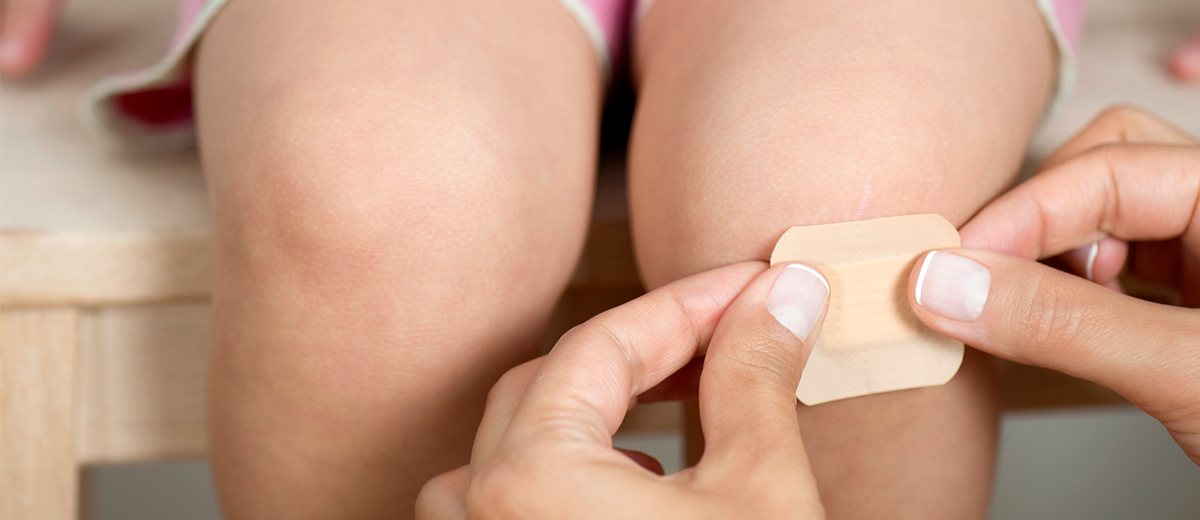Did you know that about 3.6 million cases of open wounds are reported in the US annually? Breaks in the skin can not only result in external bleeding, but they also allow for the possibility of bacteria to enter the body, causing infection. Treatment of wounds involves stopping any bleeding, then cleaning and dressing the wound to prevent infection.
So, what exactly is the purpose of a bandage? An adhesive bandage is a small dressing that protects wounds and scabs from friction, bacteria, damage and dirt allowing for undisturbed healing. And with so much variety among bandages, we thought it would be helpful to list out bandage types and their differences.
Bandage Types
Plastic bandages are cost effective and help repel water.
Sheer bandages are appealing because they are visually subtler.
Flexible fabric bandages can stretch without breaking their seal, even during heavy activity. They’re also more comfortable to wear for longer periods of time.
Waterproof bandages have more staying power than other bandage models to help them adhere to the skin even when they become wet.
Dressing Types
Island dressings have a central, absorbent island wound pad that offers mild compression and fluid retention up to 10 times its own weight. The 360-dregree adhesive coverage keeps contaminates out.
Edge to edge dressings have a ventilated design that allows air to flow when the bandage is applied.
Shapes & Sizes
Knuckle bandages are a special adhesive bandage that are hourglass shaped or notched to prevent folds and bunching. This makes it easy to apply to cuts and abrasions occurring between the fingers and toes. Simply peel off the backing and then position the wings to go between the fingers/toes, with the center piece located over the wound.
Fingertip bandages are used for just that – a fingertip! It is made to easily wrap around the finger.
Strip bandages come in small, medium and large sizes and are used for small cuts and abrasions that occur on a flat surface. Extra-large sizes are also available for those unfortunate, larger wounds.
MacGill Bandage Tips
- If a bandage gets wet or soiled, put on a new, clean bandage to help prevent infection.
- If a bandage does become stuck to a scab, soak it in warm water to soften the scab and make the bandage easier to remove.
- Properly dressing a cut or scrape helps healing and reduces the potential for scarring.
MacGill carries a large variety of bandages in various materials, quantities, shapes, sizes, colors, and designs – including latex-free. If you have any questions about bandage options, please contact us. We’d be happy to answer your questions and help you find the best bandages for your needs.





